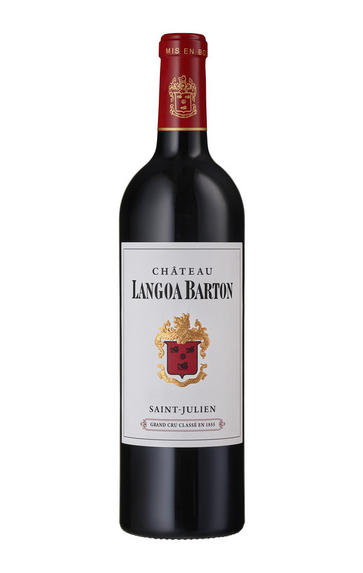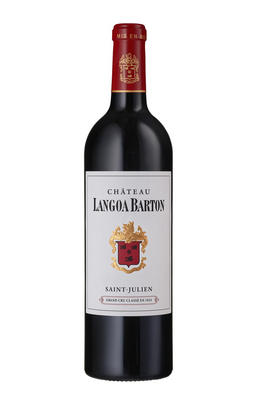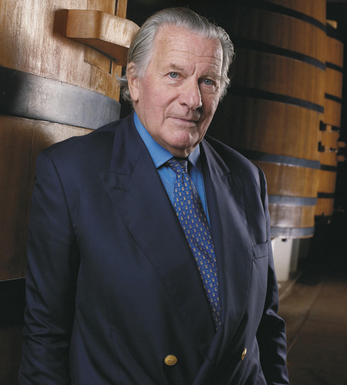
2021 Château Langoa Barton, St Julien, Bordeaux

Critics reviews
The 2021 Langoa Barton was picked 27 September until 7 October, matured in 60% new oak. Analysis shows 13.03% alcohol. It has a well-defined bouquet with expressive Merlot this year. Hints of blood orange/orange sorbet percolate through the red fruit. It has a skip in its step. The palate is medium-bodied with a taut and fresh entry. Plenty of sapidity here, oyster shell tinged with a well-defined and quite persistent finish. Lovely length, this is quite a gorgeous Saint-Julien that will age beautifully in bottle.
Drink 2026 - 2048
Neal Martin, vinous.com, (May 2022)
Bright plum in colour, this is skilfully expressed, austere but present red cherry and blackberry fruits, strict tannic structure that opens through the mid palate to allow some juice and sandalwood smoke to run through the fruit. This has less of the exuberant depths that we have seen in Langoa in recent vintages, a little more old school overall, but will age, and has appellation signature. 60% new oak. Technical director François Brehant, consultant Eric Boissenot.
Drink 2027 - 2040
Jane Anson, janeanson.com (May 2022)
The first vintage vinified in the Barton family's new winery, the 2021 Langoa Barton is immensely promising, offering up aromas of cassis, cigar wrapper, loamy soil and black truffle, followed by a medium to full-bodied, velvety and seamless palate that's deep and complete, its vibrant core of fruit framed by ripe tannins and lively acids. It's a blend of 61% Cabernet Sauvignon, 36% Merlot and 3% Cabernet Franc. Tasted three times.
William Kelley, Wine Advocate (Apr 2022)
About this WINE

Chateau Langoa Barton
Château Langoa-Barton, 3rd Classified Growth, was the first of the two Bordeaux wine estates bought by Hugh Barton in the 1820s, the other being Léoville-Barton, 2nd Classified Growth.
Hugh Barton was a descendant of an Irish family which settled in Bordeaux in the 18th century and which has a long and distinguished history in the region’s wine trade. Both properties are still family-owned and run and together represent the longest tradition of unchanged ownership in the Médoc. After the death of the late Anthony Barton in 2022, his daughter Lilian and grandson Damien Barton have now taken the reins.
Langoa Barton has 20 hectares of vineyards (Cabernet Sauvignon 71%, Merlot 21%, Cabernet Franc 8%) lie on gravelly-clay soils. Vinification includes 18 months' maturation in oak barriques (50% new). Langoa Barton is vinified and matured in exactly the same way as Léoville-Barton and any difference between them must be put down to variations in the soils and exposure of their respective vineyard blocks.
Both Langoa and Léoville wines are models of typical St Julien restraint and elegance, and the château’s fair pricing policy, always with an eye to the long term , has won it many loyal friends amongst its customers. For years, Langoa Barton was considered slightly lighter and more forward than Léoville. However, in the last decade it has become noticeably deeper in colour and richer and more concentrated on the palate. Langoa Barton is now often the equal of Léoville.

St Julien
St Julien is the smallest of the "Big Four" Médoc communes. Although, without any First Growths, St Julien is recognised to be the most consistent of the main communes, with several châteaux turning out impressive wines year after year.
St Julien itself is much more of a village than Pauillac and almost all of the notable properties lie to its south. Its most northerly château is Ch. Léoville Las Cases (whose vineyards actually adjoin those of Latour in Pauillac) but, further south, suitable vineyard land gives way to arable farming and livestock until the Margaux appellation is reached.
The soil is gravelly and finer than that of Pauillac, and without the iron content which gives Pauillac its stature. The homogeneous soils in the vineyards (which extend over a relatively small area of just over 700 hectares) give the commune a unified character.
The wines can be assessed as much by texture as flavour, and there is a sleek, wholesome character to the best. Elegance, harmony and perfect balance and weight, with hints of cassis and cedar, are what epitomise classic St Julien wines. At their very best they combine Margaux’s elegance and refinement with Pauillac’s power and substance.
Ch. Léoville Las Cases produces arguably the most sought-after St Julien, and in any reassessment of the 1855 Classification it would almost certainly warrant being elevated to First Growth status.
Recommended Châteaux: Ch. Léoville Las Cases, Ch.Léoville Barton, Ch Léoville Poyferré, Ch. Ducru-Beaucaillou, Ch Langoa Barton, Ch Gruaud Larose, Ch. Branaire-Ducru, Ch. Beychevelle

Cabernet Sauvignon Blend
Cabernet Sauvignon lends itself particularly well in blends with Merlot. This is actually the archetypal Bordeaux blend, though in different proportions in the sub-regions and sometimes topped up with Cabernet Franc, Malbec, and Petit Verdot.
In the Médoc and Graves the percentage of Cabernet Sauvignon in the blend can range from 95% (Mouton-Rothschild) to as low as 40%. It is particularly suited to the dry, warm, free- draining, gravel-rich soils and is responsible for the redolent cassis characteristics as well as the depth of colour, tannic structure and pronounced acidity of Médoc wines. However 100% Cabernet Sauvignon wines can be slightly hollow-tasting in the middle palate and Merlot with its generous, fleshy fruit flavours acts as a perfect foil by filling in this cavity.
In St-Emilion and Pomerol, the blends are Merlot dominated as Cabernet Sauvignon can struggle to ripen there - when it is included, it adds structure and body to the wine. Sassicaia is the most famous Bordeaux blend in Italy and has spawned many imitations, whereby the blend is now firmly established in the New World and particularly in California and Australia.


Buying options
Add to wishlist
Description
Cabernet Sauvignon 61%, Merlot 36%, Cabernet Franc 3%
This is the first Langoa vintage made in the new winery, though Damien Barton Sartorius has kept the wooden fermentation vats, which are harder to maintain but are, he feels, intrinsic to the Barton style. The 2021 is aromatically energetic and bouncy, with a certain sturdiness on the palate (which is usual) but also a finely judged structure that guides rather than dominates the finish. This is complete and classically styled, lifted by the finely crafted and perfumed aromatics. Drink 2026-2040.
Our score: 16.5/20
Berry Bros. & Rudd, April 2022
wine at a glance
Delivery and quality guarantee